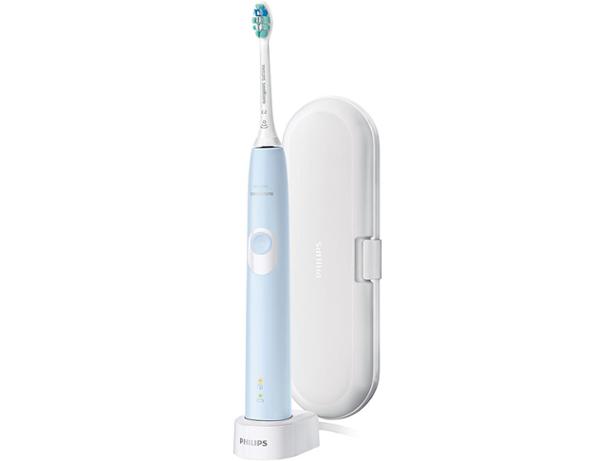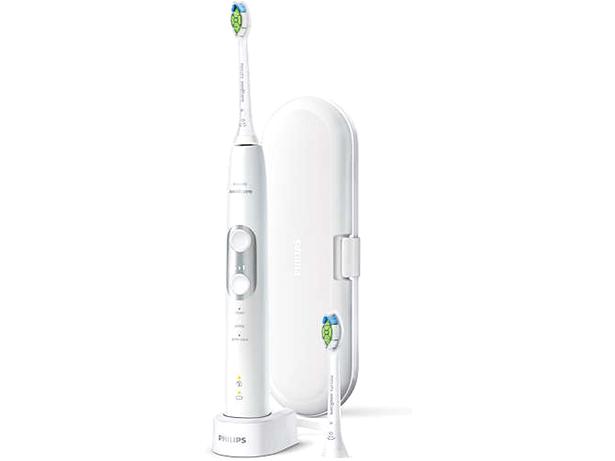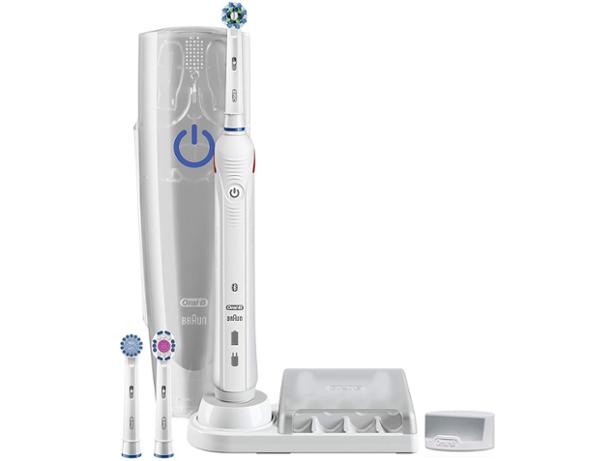Choosing the best toothpaste

Whether you're looking for a toothpaste to help with whitening, enamel repair, deep cleaning, germ protection, tartar control or sensitivity relief, there are hundreds of options vying for your attention.
But some big claims don't stand up to scrutiny, or may not deliver quite the spectacular dental overhaul they promise.
We asked the experts how popular ingredients work, and which claims to take with a pinch of salt, to help you choose the best - and best value - toothpaste for your needs.
Get the latest tips on living well delivered straight to your inbox - sign up to our free monthly food and health newsletter
The importance of fluoride

Brushing with a fluoride toothpaste remains the best thing you can do to maintain your dental health, according to experts.
Fluoride infiltrates the enamel’s surface and reaches areas that brushing can’t – providing you brush for around two minutes – making the tooth surface harder (remineralising) and more resistant to attack by sugar-loving bacteria. To maximise its benefit, spit but don’t rinse your mouth with water after you finish brushing.
The gold standard of research reviews, Cochrane, found that the use of fluoride in toothpaste leads to less tooth decay. The stronger the concentration, the more decay is prevented.
Fluoride and tap water

Some people may assume they don’t need fluoride in their toothpaste because they are already getting it from tap water, but this isn’t necessarily the case. Only around 10% of the UK population receives water with optimal levels of fluoride. To find out if your area is one of them, visit the BFS website or contact your local water supplier.
A common concern is that consuming fluoridated tap water and using fluoride toothpaste could lead to excessive fluoride consumption, but the NHS says dental fluorosis, a condition that causes pitting or discolouration of children’s teeth caused by excessive fluoride, is uncommon in the UK, as fluoride in the water supply, where it is added, is carefully regulated.
Need a dentist? See our guide to NHS and private dental charges
What to look for when buying toothpaste
- Check the fluoride concentration. Look for the parts per million of fluoride (ppmF). Less than 1,000ppmF is a low concentration and offers limited or no protection against decay. 1,450ppmF is generally used in over-the-counter UK toothpastes and is recommended by our experts. But children's formulas can contain lower levels.
- Think about your needs. Many people – especially those who brush well – don’t need extra active ingredients apart from fluoride. If you have specific concerns around things such as whitening, sensitivity or enamel wear, see our ingredients guide (below) to understand the claims made about a particular toothpaste, and whether the evidence supports them.
- Check the pack size. A toothpaste that looks cheap can be pricey when you calculate the price per 100ml compared with rivals.
Want to invest in a decent electric toothbrush? Read our electric toothbrush reviews first
Toothpaste for sensitive teeth

Dentine sensitivity is believed to be caused by fluid moving up the tiny tubules connecting tooth dentine to the nerve. Temperature changes, pressure, or sweet or acidic food can influence the fluid’s movement.
To try to combat it you can either desensitise the nerves or block the tubules. Toothpastes that claim to treat sensitive teeth are considered medicinal products and are subject to Medicines and Healthcare Products Regulatory Agency (MHRA) rules around how they are marketed.
Our experts examined some of the key ingredients used in popular toothpastes and found all have good evidence to support them, but one type may work better for you than another.
All desensitising toothpastes will be more effective if you reduce the acidic food and drinks you consume between meals. You may find that your hypersensitivity resolves naturally over time, or it may be an intermittent problem. It's always worth seeing a dentist to rule out the possibility of other underlying issues.
The main active ingredients for tackling sensitivity are:
Potassium nitrate
Potassium nitrate is the desensitising ingredient found in Sensodyne Original - perhaps the most well-known toothpaste formulated for sensitive teeth. There’s good evidence that potassium nitrate builds up over time to desensitise nerves. However, the time taken to work is the downside – it can take up to two weeks to be effective.
Stannous fluoride
A more recent innovation in the world of dentine hypersensitivity, stannous fluoride is one of the three types of fluoride that can be found in toothpastes, and is found across Oral B's Pro-Expert range and also in Sensodyne's Rapid Relief toothpaste. It blocks the tubules and works very quickly.
Arginine
Arginine is Colgate’s weapon of choice against sensitivity. It combines with calcium carbonate to block tubules and should start working rapidly.
Best loo roll - get the best value toilet roll with our comparison of supermarket brands vs Andrex and Cushelle
Whitening toothpastes

Whitening toothpastes are on shakier ground when it comes to whether they live up to their claims or not.
There are two types of staining that affect the ‘whiteness’ of your teeth:
- Intrinsic staining happens inside your teeth and can be caused by trauma, certain medical treatment or excessive childhood fluoride consumption (but this is rare in the UK). Teeth also yellow as we age, due to thinning enamel. The only way to remove intrinsic staining is bleaching through dentist-administered professional products (using hydrogen peroxide).
- Extrinsic staining surface stains typically caused by smoking, or drinking tea, coffee or red wine. These respond well to brushing with whitening toothpaste, which contains ingredients to help remove stains, but won’t change the underlying colour of your teeth.
So as long as you don't have expectations that a whitening toothpaste will change the underlying colour of your tooth enamel, there may be value in buying a toothpaste which makes whitening claims, as it could contain stain-removing ingredients that a standard paste won't have.
Here's a rundown of the evidence behind typical ingredients found in whitening toothpastes:
Hydrogen peroxide
Whilst this ingredient is used for professional whitening (i.e. changing the colour of your teeth), the UK legal limit for toothpaste is a concentration of 0.1%, compared with 6% in a professional whitening treatment, so it's unlikely to have much effect on underlying enamel colour in toothpaste form.
Optical brighteners
Another method for whitening is the use of a film that coats the teeth to provide an optic whitening effect. Blue covarine is a typical optic brightening ingredient, though more recently the trend has turned towards purple toothpastes.
Both aim to cancel out yellow tones due to colour science (complementary colours neutralise each other, and blue/purple and yellow are complementary).
These might have an immediate whitening effect, but won’t last as saliva washes away most paste quite rapidly. Look carefully and you'll see the claims have small print to this effect. When we challenged Colgate about its Purple Reveal toothpaste, it couldn't tell us exactly how long the effect would last.
Sodium bicarbonate
Sodium bicarbonate is an effective stain remover with mild abrasive action. It also has some anti-bacterial properties. It’s a favourite for ‘natural’ toothpastes, for example Arm & Hammer uses it across its range.
Charcoal
Charcoal whitening toothpaste has seen a huge rise in popularity, despite the Oral Health Foundation and our experts agreeing there’s not enough evidence to support claims around its whitening effect.
Charcoal, in some higher strength formulations, can also be too abrasive, which could wear down tooth enamel over time. Furthermore some charcoal toothpastes are also fluoride-free, which our experts would not recommend.
Hydrated silica, mica and calcium carbonate
These are all mild abrasives that will help to clean and polish your teeth, removing surface stains. A toothpaste's level of abrasion is known as its RDA (relative dentin abrasivity). Most will have a fairly low level but whitening toothpastes can be more abrasive.
Be sure to follow instructions carefully, some stronger whitening toothpastes may not be intended for daily use.
Warning: beware teeth whitening products from online marketplaces - our investigation uncovered potentially unsafe products for sale
Enamel repair toothpastes

There have been some innovations in this area in recent years and there may be good reason to choose a toothpaste targeted at repairing enamel.
But, bear in mind all fluoride toothpastes provide some protection against enamel erosion, and fluoride is the basis of many an enamel repair claim, as it works to harden or ‘remineralise’ enamel. Even cheap toothpastes contain this, so you don't necessarily need to splash out.
If you suffer from enamel erosion, talk to your dentist too. They may suggest alternatives, such as changing your diet or brushing technique, using fluoride mouthwashes separately to brushing, or professional application of fluoride varnish.
That being said, some of the fancier toothpastes do have some extra weapons up their sleeve.
Fluoride
There are three types of fluoride: sodium fluoride, sodium monoflurophosphate and stannous fluoride.
All will help with remineralisation and therefore, can be said to repair enamel. But manufacturers of enamel repair pastes are likely to base their claims around the particular formulation of their paste assisting with optimal uptake and absorption of the fluoride.
Calcium silicate and sodium phosphate
Unilever’s Regenerate Enamel Science Advanced toothpaste claims to regenerate enamel through the action of calcium silicate and sodium phosphate interacting with hydroxyapatite (what tooth enamel is made of).
Our experts agreed that the lab studies show the patented formula (combined with glycerine rather than water – this is its ‘NR5 technology’) could be causing changes to teeth that could be interpreted as regrowth. But this is an expensive option when alternatives may work for you - especially as some claims are based on using an additional booster serum too.
Best fruit and veg boxes - see which brand gets a resounding thumbs up from customers
Other toothpaste ingredients and what they do

What else goes into your toothpaste? The combination of ingredients is designed to provide the right texture and taste, to help the product do it's job and be palatable for you:
- Cellulose gum, carrageenan and xanthan gum - thickeners which provide texture and stop toothpaste drying out.
- Artificial or added sweeteners and flavour providers - ingredients such as limonene, cinnamal, peppermint oil, sucralose, lota carrageenan, sodium saccharin, aroma and mint flavour are there to improve the taste. The first three essential oils are known allergens.
- Sodium hydroxide - also known as lye, it neutralises the pH of other ingredients.
- Sodium lauryl sulfate (SLS) - a foaming detergent that dissolves dirt and grease. It can be quite harsh. A 2019 systematic review found that SLS-free toothpastes reduced the number and duration of mouth ulcers so if you suffer from these, you may want to choose a toothpaste without SLS. Alternatives include cocamidopropyl betaine, lauryl glucoside and disodium cocoyl glutamate.
- Humectants - such as sorbitol, glycerol, glycerin, propylene glycol, keep your toothpaste moist.
- Tin oxide - provides colour (red) and may also have an antibacterial affect.
- Titanium dioxide - this colour pigment makes toothpaste whiter and brighter.
- Zinc - a replacement for triclosan which, although not banned in the UK, has now been removed from most toothpastes over concerns about its safety. Zinc has antibacterial properties and is a common ingredient in toothpaste, but experts agree that the most important factor in removing bacteria is brushing effectively.
Eco, natural and vegan-friendly toothpastes

There are now a significant number of products that market themselves on their eco, vegan or sustainable credentials.
Toothpaste tablets that you chew aim to cut down on the plastic waste generated by toothpaste tubes. While it wasn't always the case, many toothpaste tubes are now recyclable, as they're manufactured from plastic alone, as opposed to a mix of plastic and metal.
However, not all kerbside council collections accept them, so you may need to drop them off at a Boots store or other collection point. See our full story on toothpaste tube recycling for more.
You can also buy vegan toothpastes which means they don't contain animal products, but are also cruelty free (have not been tested on animals). Some toothpastes advertise their natural ingredients such as coconut oil or charcoal, or the absence of palm oil.
What to watch out for
Fluoride-free formulas - some products making natural claims are also fluoride free. This puts you at increased risk of dental caries, no matter how carefully you brush. Fluoride is considered to be safe and effective by dental experts.
Tablets - the majority of scientific research has been done into how pastes work in combination with brushing, not tablets, so there is no guarantee that these will offer the same protection. Watch out for ones that are also fluoride-free (see above).
How to brush your teeth - see our guide to using an electric toothbrush for the best results



